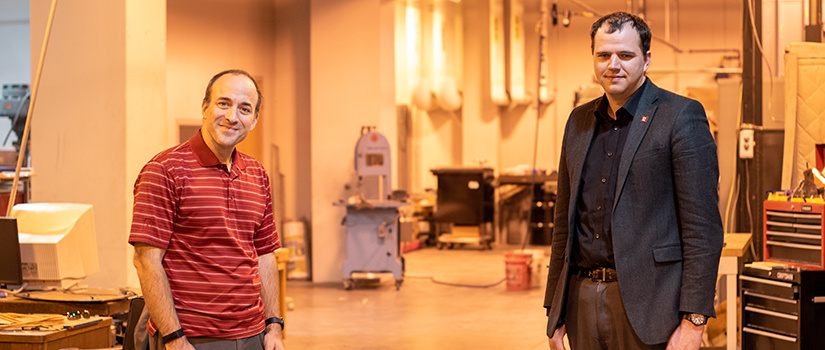Bakos leading study that applies machine learning in new domain
By Leigh Thomas | November 5, 2020
Jason Bakos of the College of Engineering and Computing has received a grant from the National Science Foundation to design processors capable of real-time machine learning of the behavior and response of high-rate dynamic systems. This study is expected to produce technology that will improve the reaction time of high-energy systems such as ballistics, airbag deployment and high-speed vehicle control.
Bakos is the principal investigator for the study, a four-year $1.2 million project with $690,248 allocated to UofSC. Bakos and co-investigator Austin Downey are collaborating with the University of Arkansas on the project.
“This study is about machine learning, a technique in which a large data set is distilled down to a small mathematical model that allows you to identify content of images and video and recognize features in time-series data," Bakos says. "Machine learning is typically tied to systems such as image object recognition, weather prediction and natural language processing, such as talking to Siri.”
The team is running both the training and computational phases of the study. Bakos explains that a trained model yields predictions, but no matter how big the computer on which a machine learning model is run, in the prediction phase, it operates on a time scale of hundreds of milliseconds. In terms of computers, this is a long time.
Bakos says, “This is fine for Siri or taking a picture, but the objective of this project is to investigate the use of machine learning in a new domain—high-energy systems such as hypersonic vehicles or blast mitigation.”
In order to control high-energy systems, the machine must be able to react in an amount of time that will make a difference in the outcome. For instance, in ballistics, machine learning will allow the development of weapons that minimize collateral damage. A weapon’s fuse will activate at the perfect time, allowing a shell to penetrate several layers of concrete before it explodes. The technology is also applicable for other systems, including digital image stabilization for high-speed cameras, airbag deployment and how high-speed vehicles respond to unexpected events such as collisions.
This study builds on another project led by Downey and funded by NSF which focuses on learning and predicting time-series data in real-time. By doing so, researchers can identify patterns on the fly, which allows them to predict future events based on patterns they are currently observing. If patterns change, models have to adjust, and the goal is to minimize the time required for adjustment.
The team will develop deployment tools that combine the model generation and training phases to create the least complex and least expensive model that still meets accuracy requirements.
“The drawback to machine learning is that it carries a high computational cost. It is so prevalent now, not because it wasn’t well understood earlier, but because computers, and GPUs in particular, have only recently become fast enough to make it practical,” says Bakos.
Once the model is generated, researchers will then convert it into a specialized embedded processor to be used in weapons, vehicles, cameras and other applications. The desired result is a response time of one microsecond for these high-energy systems, which is extremely fast in machine learning.
Austin Downey is an assistant professor of mechanical engineering in the College of Engineering and Computing. His research focuses on enhancing the safety and serviceability of structures through structural health monitoring and control.
Jason Bakos is a professor of computer science and engineering in the College of Engineering and Computing. His research interests involve computer architecture at the circuit level, micro-architectural level and system level, including VLSI design, design automation, system-level interconnects, reconfigurable computing and high-performance computing.
